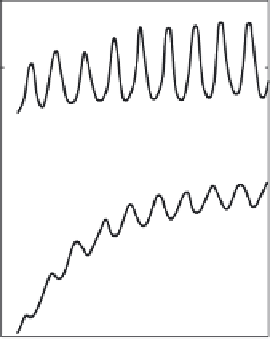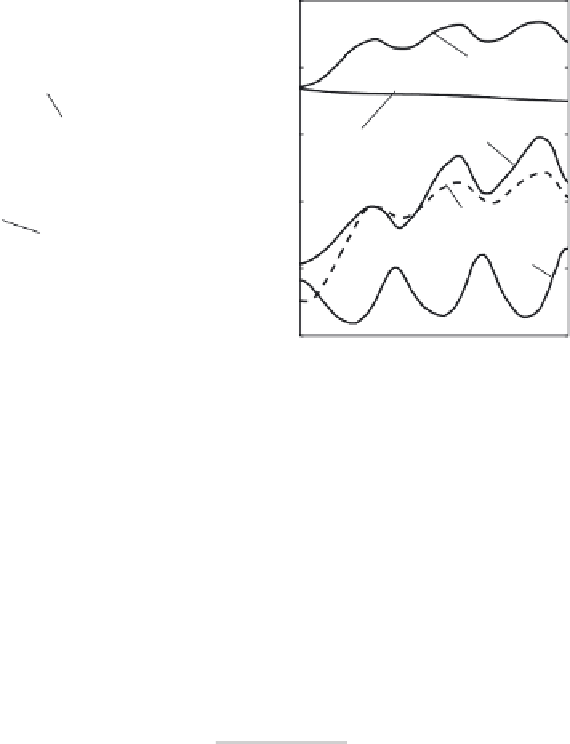Geoscience Reference
In-Depth Information
0.8
O
+
1.1
0.7
N
*
NO
+
N
1
0.6
0.9
0.5
N
e
N
e
N
*
0.8
0.4
0.7
0.3
100
150
200
100
110
120
130
Time, s
Time, s
Fig. 13.5.
Time variations of normalized ion components for minimum (left) and
maximum solar activity (right) for
τ
T
=10s
•
10 s temperature oscillations yield depths of modulation of
N
e
,
an order
of magnitude smaller than in the case of 100 s oscillations.
13.4 Ionospheric Conductivity
We assume that a powerful HF-wave travels through a medium with a new
established value of
N
e
determined by the temperature dependence of the
effective recombination rate. Let
N
e
=
N
e
0
1+
γ
T
e
−
T
e
0
T
e
0
,
(13.16)
with the parameter
γ
is introduced to take into account the dependence of the
N
e
variations on the modulation period of the HF-wave. For the estimates we
put
γ
=0
.
5and
γ
= 1, which correspond roughly to a period at 100 s and to
the quasi-stationary case.
Figure 13.6 shows the relative disturbances of
δΣ
P
(solid and chain lines)
and
δΣ
H
(dashed and dotted lines) determined from a numerical solution of
(13.3) with
N
e
dependent on
T
e
in accordance with (13.16). Here, as well as
in Fig. 13.2, the applied electric field is
E
= 5 V/m. Comparing Figures 13.2
and 13.6, we see that the displacement of the ionization balance in the pump
wave leads to a growth of the conductivity to 10
−
20% in the daytime and to
50% in the nighttime.
Of course, the self-action of a strong wave, especially in the night
ionosphere, leads to distortion of its modulation. We will not consider these












Search WWH ::

Custom Search